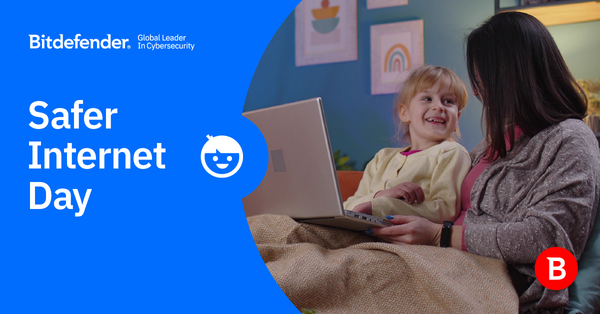Safer Internet Day 2025: Digital Well-Being and Online Safety for Kids

It’s almost Feb. 11, and this can only mean one thing in the online safety calendar --Safer Internet Day (SID). Every year, this event reminds us of the importance of fostering a safer, more responsible digital environment for kids and young people alike.
In 2025, we’re focusing on understanding the threats children and teenagers face online to better equip them with the knowledge and tools needed to stay safe.
Understanding Online Threats for Kids and Teens
Young people have countless opportunities to thrive online, but increased digitalization and internet use expose youths to serious risks, including:
1. Scams and Social Engineering
Anyone going online can be targeted by scammers, and children and teens are particularly vulnerable due to their trust in digital interactions. Social engineering tactics manipulate kids into sharing personal information or clicking harmful links. Teaching them how to recognize and avoid scams is crucial in preventing identity theft and fraud.
How to Stay Safe:
- Be skeptical of online offers that seem too good to be true.
- Avoid clicking on unsolicited links or downloading unknown attachments.
- Use free security tools like Bitdefender Scamio and Bitdefender Link Checker to detect malicious links and scams with ease and in real-time.
2. Misinformation
With the spread of social media, misinformation travels faster than ever. Young users must be equipped with critical thinking skills to distinguish between real and fake news, preventing the spread of false information.
To stay well-informed, kids should:
- Fact-check before sharing—A quick search can help spot fake news.
- Recognize misinformation—Be aware of clickbait and misleading headlines.
- Check sources—Is the information from a reliable and credible source?
- Protect digital privacy—Be mindful of personal data and online security.
3. Extortion
Many young people unknowingly share personal content, making them easy targets for scammers. For youth, extortion often takes the form of online blackmail, with perpetrators threatening to expose intimate images unless demands are met.
How to Stay Safe:
- Never share intimate images online, even with trusted individuals.
- If threatened, do not comply—report and block the individual immediately.
- Seek support from parents, teachers, or police.
4. Loss of Control Over Shared Content
Once something is shared online, it can be nearly impossible to erase. Children and teens often underestimate how easily private content can spread beyond their intended audience.
How to Stay Safe:
- Think before posting or sharing content.
- Use privacy settings to restrict who can view your content.
- Regularly audit social media accounts and remove unwanted posts or connections.
5. Grooming
Online predators use deception and manipulation to establish relationships with minors, gaining their trust before exploiting them. Recognizing the warning signs of grooming can help prevent dangerous situations. Warning signs include persistent messaging, requests for secrecy, and pressure to share personal details or images.
How to Stay Safe:
- Be cautious of strangers who ask personal questions or try to move conversations to private platforms.
- Don’t share personal details like your full name, address and phone number with strangers online even if they seem friendly and trustworthy at first.
- Report and block suspicious users immediately.
- Talk to a trusted adult and report it to authorities.
6. Cyberbullying
Cyberbullying occurs when individuals use digital platforms to harass, threaten, or humiliate others. It can have serious emotional and psychological consequences, especially for young users.
How to Stay Safe:
- Do not engage with or retaliate against bullies—block and report them instead.
- Keep records of cyberbullying incidents as evidence if needed.
- Talk to a trusted adult whenever you experience or witness cyberbullying.
- Adjust privacy settings to limit interactions with strangers.
- Promote kindness and respectful online interactions to foster a safer digital environment.
A Trusted Resource: Bitdefender’s Cybersecurity Guide for Kids
To further help families and young users navigate online safety, Bitdefender has developed a comprehensive Cybersecurity Guide for Kids, a great resource that provides practical tips and easy-to-understand safety guidelines to empower children and parents in building a safer online experience.